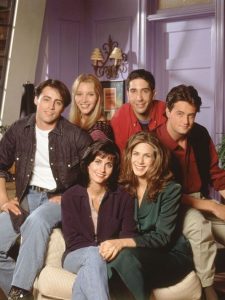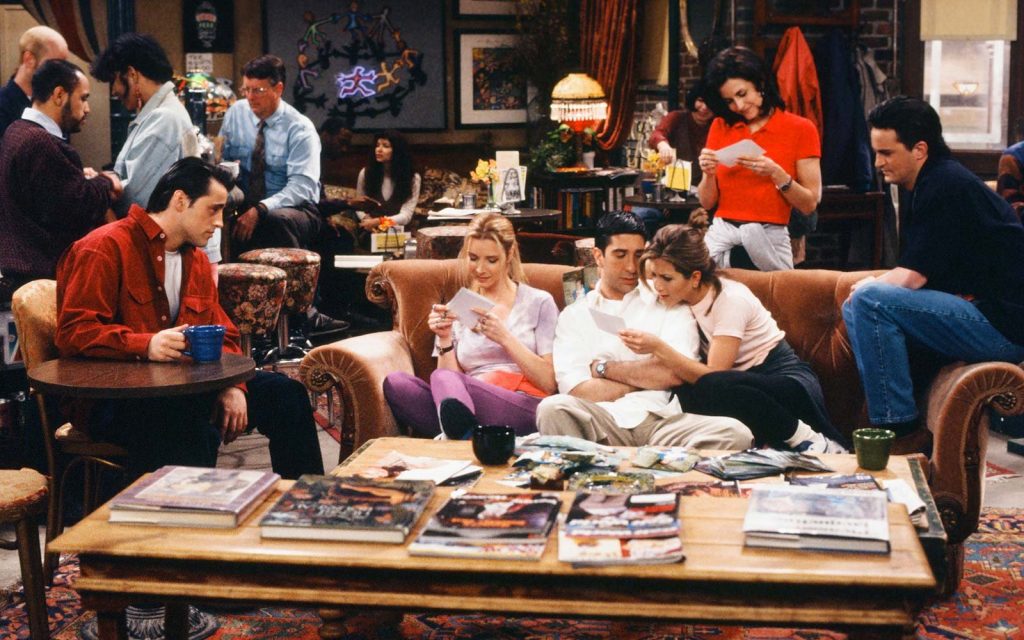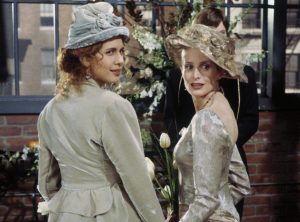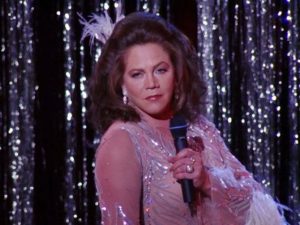Ah, 2009. When Lady Gaga was still wearing dresses made of meat and releasing super provocative music videos to push the envelope, when soccer moms were jamming along to Kesha brushing her teeth with a bottle of jack, when everyone was upset Adam Lambert lost American Idol, when Miley Cyrus first tried to be seen as something other than Hannah Montana, and it wasn’t considered problematic to sing along to Taylor Swift’s country-pop crossover hits. What a magical time to be alive! Well, get ready to feel old because in case it hadn’t already hit you, 2009 was already a full decade ago which means that all of our favorite tunes from that era are officially 10 years old. And if you’re like me, most of these songs are still in your music library because they never stopped being GOOD (for the most part). Fasten your seatbelts and hold onto your hats as we take a walk down memory lane through 25 songs that were popular in 2009 (well, at least in my brain) and are turning 10 this year.
“When I Look at You” – Miley Cyrus

Wow, the rumors are true. It’s already been 10 years since Miley Cyrus and Liam Hemsworth dreamily stared into each others’ eyes in The Last Song and Miley took an honest stab at adult pop music for the first time and you sang along to every word and pretended to miss a lover that didn’t even exist… ah, youth. And yes, this song is still beautiful.
“It’s Alright, It’s OK” – Ashley Tisdale

How appropriate that Ashley Tisdale’s best song is turning 10 the same year that Tisdale is releasing new music for the first time since 2009?! As long as you’re here, go stream “It’s Alright, It’s OK” to remind yourself how good it still is and then go check out Tisdale’s new songs “Voices in My Head” and “Love Me & Let Me Go” from her upcoming new album Symptoms.
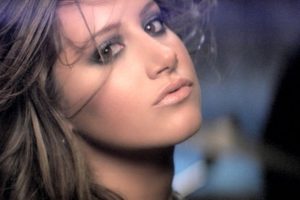
How appropriate that Ashley Tisdale’s best song is turning 10 the same year that Tisdale is releasing new music for the first time since 2009?! As long as you’re here, go stream “It’s Alright, It’s OK” to remind yourself how good it still is and then go check out Tisdale’s new songs “Voices in My Head” and “Love Me & Let Me Go” from her upcoming new album Symptoms.
“About You Now” – Miranda Cosgrove

Remember when everyone in pop music thought that Miranda Cosgrove (former Nickelodeon teen star best remembered for iCarly) was going to be the next big thing? No? Well, it was brief. She had a few songs that were good then and still good now (if you’re into cheesy pop, which why wouldn’t you be?)
“Battlefield” – Jordin Sparks

I miss Jordin Sparks! I remember buying a physical copy of her debut album after she won American Idol and—fun fact—“Battlefield” was the first song I ever bought on the iTunes Store. They don’t make pop songs like this anymore. Go stream Jordin Sparks’ music even though she fell from relevance probably right after this song came out.
“Right Round” – Flo Rida feat. Kesha

I have such vivid memories of so many kids being obsessed with this song and their parents informing them with a pep in their step that it was a cover of another popular song from the ‘80s—“You Spin Me Round (Like a Record)” by Dead or Alive. Not to mention it was the world’s introduction to a girl named Kesha, and that was only the beginning.
“Here We Go Again” – Demi Lovato

It’s honestly a bit hard for me to wrap my head around the concept that this song is already 10 years old since I remember the day that it came out and I don’t think there’s been a day since where I haven’t stopped listening to it.
“Naturally” – Selena Gomez & The Scene

Remember when this song’s music video was always on Family Channel in between golden-era Disney shows and you thought it was so creative and imaginative that you watched it on YouTube about four more times later that day? No? Well, you would’ve had to have been a late Canadian millennial to understand any of that. This song is also still very good and should rank among Selena Gomez’s best songs (also, RIP “The Scene.” I wonder whatever happened to those guys.)
“21 Guns” – Green Day

Ugh, 2009 emo music was always the BEST. I still don’t know what’s worth fighting for when it’s not worth dying for, honestly.
“Whataya Want from Me” – Adam Lambert

Do you think everyone who boycotted American Idol after Adam Lambert didn’t win could have predicted that he would have quickly fallen from relevance the year after his debut album came out? Pretty sure this is the only song the average pop listener remembers Lambert for, even though he did have some other good songs from that first album (go check out “If I Had You” too while you’re here). Also, I didn’t dislike Adam Lambert when he was on Idol but I always loved Kris Allen who ended up winning that year merely because I thought he was super cute even if I was light years away from putting that feeling into words. I even bought a physical copy of Kris Allen’s debut album when it came out and not Adam Lambert’s but this is really all a moot point since Kris Allen is even more irrelevant than Adam Lambert now, as are the majority of Idol winners from the ‘00s.
“Love Drunk” – Boys Like Girls

I was honestly surprised to find that this song was still in my iTunes library. I remember the last time I heard it before now would’ve been when it came on shuffle randomly one day a few years ago and in the midst of rolling my eyes at how cheesy the lyrics and production are now, it’s still really damn catchy. Gotta love a one-hit wonder.
“Replay” – Iyaz

I was probably even more surprised to realize this song was also still in my music library since I guarantee I hadn’t listened to it since at least 2010—probably since I remember it being the only song anyone ever listened to for several months in 2009. My iPod is still stuck on replay, TBH.
“Whatcha Say” – Jason Derulo

Wait, no—this song is probably the only song I remember anyone ever listening to for quite a long time in 2009. If I had to pick only one song from that year that I would describe as “sounding like 2009,” it would probably be this one.
“Fireflies” – Owl City

I remember so many people both simultaneously making fun of Owl City while also buying his album when “Fireflies” was popular—because it was THAT song. It was weird but somehow oddly catchy and oddly comforting; a total guilty pleasure. It still holds a special place in my heart.
“Bad Romance” – Lady Gaga

Do you even remember how obsessed everyone was with this song when it came out? People like to recall “Just Dance” or “Poker Face” as moments when everyone became obsessed with Gaga, but “Bad Romance” was definitely the moment where it became clear that she was here to stay—and pop music hasn’t been the same since.
“TiK ToK” – Kesha

Ah, “TiK ToK.” This song somehow feels both younger and older than merely a decade. It introduced us to Ke$ha as a solo artist (who can’t come to the phone right now because she’s dead) and also ushered in a new era of electropop, which hasn’t left the charts since. This song hit number one across the board because it worked as the kind of catchy party song we were into in 2009, but unlike our other favorite pop queens of the era, it didn’t feel like Ke$ha had much else to offer. That all changed when she dropped the dollar-sign from her name in 2014 and embarked on a landmark lawsuit against producer Dr. Luke, who had both signed her and produced the majority of her first two albums, alleging physical, sexual, and emotional abuse. Amidst it all, Kesha re-emerged with her third album Rainbow in 2017 (5+ years since her electropop hits dominated pop charts) which powerfully and eloquently reclaimed her own narrative, singlehandedly creating one of this generation’s most powerful success and comeback stories. “TiK ToK” is still retroactively catchy, but its appeal doesn’t really hold up since it’s hard to enjoy it the same way knowing everything that took place both during and after.
“3” – Britney Spears

This is probably Britney’s worst single yet it was still the era where the mainstream still cared about Britney Spears so we downloaded it and sang along merely because it was Britney.
“Evacuate the Dancefloor” – Cascada

No joke—a clip of this song’s music video popped up on my Twitter feed a few months ago and I honestly did not remember which song it was. I had to wait until the chorus and even then, my memory was still a bit foggy and I don’t know HOW that’s possible considering I was very much obsessed with “Evacuate the Dancefloor” in 2009. Doesn’t really hold up as much as you’d like it to but Cascada’s earlier hit “Everytime We Touch” is still an absolute BOP so go listen to that again instead.
“Bulletproof” – La Roux

Another prime example of something everyone was obsessed with for a hot minute until something equally club-friendly came along. La Roux did manage to bring synth-pop back into the mainstream for that hot minute, though.
“Halo” – Beyoncé

Remember when “Single Ladies” came out in the later half of 2008 and everyone lost their minds so by the time “Halo” came out as a single in 2009 everyone and their mother was fully obsessed with Beyoncé again? Jeez, that obsession still hasn’t stopped.
“Already Gone” – Kelly Clarkson

It’s a shame that this song would be better remembered for its stir of controversy rather than its excellent production and Clarkson’s flawless vocals. In a nutshell, Kelly Clarkson teamed up with Ryan Tedder to write “Already Gone” for her fourth studio album All I Ever Wanted. Tedder, record producer, songwriter, and lead singer of OneRepublic, had already co-written the song “Halo” for Beyoncé. Clarkson later claimed that there were distinct similarities in the productions of both “Halo” and “Already Gone,” most notably in the melancholy piano, loud drums, and handclaps in their backing tracks. Fearing that people would think she’d stolen the song from Beyoncé, Clarkson confronted Tedder and tried to have the song removed from All I Ever Wanted, but it was too late to make any changes. She also tried to prevent RCA from releasing it as a single out of respect for Beyoncé, and later claimed they released it without her consent. Tedder was reportedly “absolutely livid” with Clarkson’s allegations, claiming that the songs were “entirely different” and later stating, “If I was going around and selling the same track to the biggest artists in the world, how long would my career last? It’s ludicrous. [...] I’m not an idiot. I’m not the kinda guy who’s gonna bust my ass for ten years to try and pull a fast one on Beyoncé or Kelly.” Clarkson and Tedder continued feuding into 2010, with Tedder saying he was no longer angry over the situation and Clarkson saying she wanted to work with new, low-profile producers for next album, and admitted to being blackmailed into working with certain big pop producers over the years by her label (*cough* Dr. Luke *cough*). An unreleased electropop song by Clarkson called “Wash, Rinse, Repeat” surfaced on the Internet a few months later which everyone generally agreed was about Tedder, to which he stated he liked the song and said, “I think Kelly speaks her mind regardless of anything. She’s great with lyrics, and I love that she is her own person. She's no puppet.” (Me thinks someone was backpedaling!) It’s a shame “Already Gone” became controversial, because it’s still a great song and is better than “Halo.” I said what I said.
“You Belong With Me” – Taylor Swift

Remember before it was cool to hate Taylor Swift for no reason at all and it was socially acceptable to know all the words to her country-pop crossover hits? Those were the DAYS.
“The Climb” – Miley Cyrus

Miley tried SO HARD to show us that she had so much more to offer as an adult singer and actress (even if this was a song from Hannah Montana: The Movie) but everyone still refused to let her age out of her Disney image—y’know, until she started twerking and licking sledgehammers. Only then did we see her as the adult she’d been trying to tell us she was back in 2009.
“Life After You” – Daughtry

Raise your hand if you miss 2000s alternative pop rock a.k.a. Daughtry’s first two albums!
“You Found Me” – The Fray

I also miss the era when everyone became obsessed with whatever depressing-yet-beautiful alternative rock song they played on Grey’s Anatomy that week (in case you needed an excuse start crying, this song was used when George O’Malley died).
“Empire State of Mind” – Jay-Z feat. Alicia Keys

Remember when you used to listen to Jay-Z and Alicia Keys sing about that concrete jungle where dreams are made of while absentmindedly staring out a car window, pretending that you’d actually been to that place before and experienced the magical things they were talking about? No? Just me? OK.
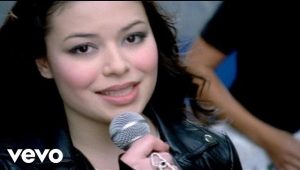
Remember when everyone in pop music thought that Miranda Cosgrove (former Nickelodeon teen star best remembered for iCarly) was going to be the next big thing? No? Well, it was brief. She had a few songs that were good then and still good now (if you’re into cheesy pop, which why wouldn’t you be?)
“Battlefield” – Jordin Sparks
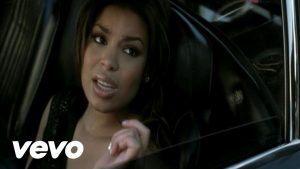
I miss Jordin Sparks! I remember buying a physical copy of her debut album after she won American Idol and—fun fact—“Battlefield” was the first song I ever bought on the iTunes Store. They don’t make pop songs like this anymore. Go stream Jordin Sparks’ music even though she fell from relevance probably right after this song came out.
“Right Round” – Flo Rida feat. Kesha

I have such vivid memories of so many kids being obsessed with this song and their parents informing them with a pep in their step that it was a cover of another popular song from the ‘80s—“You Spin Me Round (Like a Record)” by Dead or Alive. Not to mention it was the world’s introduction to a girl named Kesha, and that was only the beginning.
“Here We Go Again” – Demi Lovato
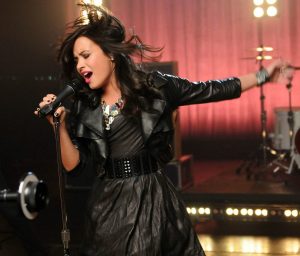
It’s honestly a bit hard for me to wrap my head around the concept that this song is already 10 years old since I remember the day that it came out and I don’t think there’s been a day since where I haven’t stopped listening to it.
“Naturally” – Selena Gomez & The Scene
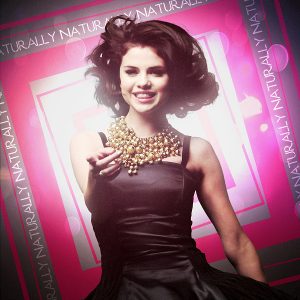
Remember when this song’s music video was always on Family Channel in between golden-era Disney shows and you thought it was so creative and imaginative that you watched it on YouTube about four more times later that day? No? Well, you would’ve had to have been a late Canadian millennial to understand any of that. This song is also still very good and should rank among Selena Gomez’s best songs (also, RIP “The Scene.” I wonder whatever happened to those guys.)
“21 Guns” – Green Day
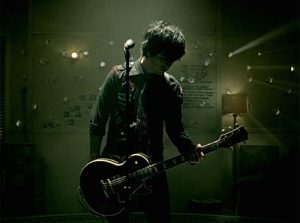
Ugh, 2009 emo music was always the BEST. I still don’t know what’s worth fighting for when it’s not worth dying for, honestly.
“Whataya Want from Me” – Adam Lambert
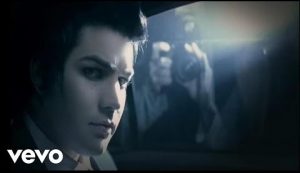
Do you think everyone who boycotted American Idol after Adam Lambert didn’t win could have predicted that he would have quickly fallen from relevance the year after his debut album came out? Pretty sure this is the only song the average pop listener remembers Lambert for, even though he did have some other good songs from that first album (go check out “If I Had You” too while you’re here). Also, I didn’t dislike Adam Lambert when he was on Idol but I always loved Kris Allen who ended up winning that year merely because I thought he was super cute even if I was light years away from putting that feeling into words. I even bought a physical copy of Kris Allen’s debut album when it came out and not Adam Lambert’s but this is really all a moot point since Kris Allen is even more irrelevant than Adam Lambert now, as are the majority of Idol winners from the ‘00s.
“Love Drunk” – Boys Like Girls

I was honestly surprised to find that this song was still in my iTunes library. I remember the last time I heard it before now would’ve been when it came on shuffle randomly one day a few years ago and in the midst of rolling my eyes at how cheesy the lyrics and production are now, it’s still really damn catchy. Gotta love a one-hit wonder.
“Replay” – Iyaz

I was probably even more surprised to realize this song was also still in my music library since I guarantee I hadn’t listened to it since at least 2010—probably since I remember it being the only song anyone ever listened to for several months in 2009. My iPod is still stuck on replay, TBH.
“Whatcha Say” – Jason Derulo

Wait, no—this song is probably the only song I remember anyone ever listening to for quite a long time in 2009. If I had to pick only one song from that year that I would describe as “sounding like 2009,” it would probably be this one.
“Fireflies” – Owl City

I remember so many people both simultaneously making fun of Owl City while also buying his album when “Fireflies” was popular—because it was THAT song. It was weird but somehow oddly catchy and oddly comforting; a total guilty pleasure. It still holds a special place in my heart.
“Bad Romance” – Lady Gaga
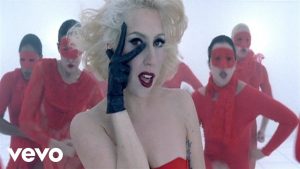
Do you even remember how obsessed everyone was with this song when it came out? People like to recall “Just Dance” or “Poker Face” as moments when everyone became obsessed with Gaga, but “Bad Romance” was definitely the moment where it became clear that she was here to stay—and pop music hasn’t been the same since.
“TiK ToK” – Kesha
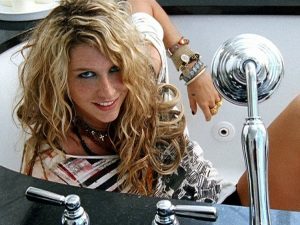
Ah, “TiK ToK.” This song somehow feels both younger and older than merely a decade. It introduced us to Ke$ha as a solo artist (who can’t come to the phone right now because she’s dead) and also ushered in a new era of electropop, which hasn’t left the charts since. This song hit number one across the board because it worked as the kind of catchy party song we were into in 2009, but unlike our other favorite pop queens of the era, it didn’t feel like Ke$ha had much else to offer. That all changed when she dropped the dollar-sign from her name in 2014 and embarked on a landmark lawsuit against producer Dr. Luke, who had both signed her and produced the majority of her first two albums, alleging physical, sexual, and emotional abuse. Amidst it all, Kesha re-emerged with her third album Rainbow in 2017 (5+ years since her electropop hits dominated pop charts) which powerfully and eloquently reclaimed her own narrative, singlehandedly creating one of this generation’s most powerful success and comeback stories. “TiK ToK” is still retroactively catchy, but its appeal doesn’t really hold up since it’s hard to enjoy it the same way knowing everything that took place both during and after.
“3” – Britney Spears

This is probably Britney’s worst single yet it was still the era where the mainstream still cared about Britney Spears so we downloaded it and sang along merely because it was Britney.
“Evacuate the Dancefloor” – Cascada

No joke—a clip of this song’s music video popped up on my Twitter feed a few months ago and I honestly did not remember which song it was. I had to wait until the chorus and even then, my memory was still a bit foggy and I don’t know HOW that’s possible considering I was very much obsessed with “Evacuate the Dancefloor” in 2009. Doesn’t really hold up as much as you’d like it to but Cascada’s earlier hit “Everytime We Touch” is still an absolute BOP so go listen to that again instead.
“Bulletproof” – La Roux
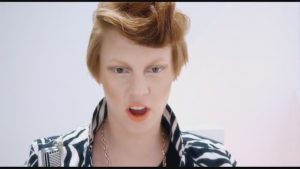
Another prime example of something everyone was obsessed with for a hot minute until something equally club-friendly came along. La Roux did manage to bring synth-pop back into the mainstream for that hot minute, though.
“Halo” – Beyoncé
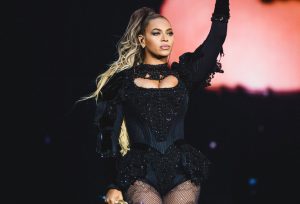
Remember when “Single Ladies” came out in the later half of 2008 and everyone lost their minds so by the time “Halo” came out as a single in 2009 everyone and their mother was fully obsessed with Beyoncé again? Jeez, that obsession still hasn’t stopped.
“Already Gone” – Kelly Clarkson
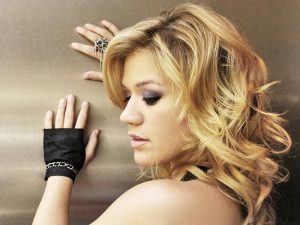
It’s a shame that this song would be better remembered for its stir of controversy rather than its excellent production and Clarkson’s flawless vocals. In a nutshell, Kelly Clarkson teamed up with Ryan Tedder to write “Already Gone” for her fourth studio album All I Ever Wanted. Tedder, record producer, songwriter, and lead singer of OneRepublic, had already co-written the song “Halo” for Beyoncé. Clarkson later claimed that there were distinct similarities in the productions of both “Halo” and “Already Gone,” most notably in the melancholy piano, loud drums, and handclaps in their backing tracks. Fearing that people would think she’d stolen the song from Beyoncé, Clarkson confronted Tedder and tried to have the song removed from All I Ever Wanted, but it was too late to make any changes. She also tried to prevent RCA from releasing it as a single out of respect for Beyoncé, and later claimed they released it without her consent. Tedder was reportedly “absolutely livid” with Clarkson’s allegations, claiming that the songs were “entirely different” and later stating, “If I was going around and selling the same track to the biggest artists in the world, how long would my career last? It’s ludicrous. [...] I’m not an idiot. I’m not the kinda guy who’s gonna bust my ass for ten years to try and pull a fast one on Beyoncé or Kelly.” Clarkson and Tedder continued feuding into 2010, with Tedder saying he was no longer angry over the situation and Clarkson saying she wanted to work with new, low-profile producers for next album, and admitted to being blackmailed into working with certain big pop producers over the years by her label (*cough* Dr. Luke *cough*). An unreleased electropop song by Clarkson called “Wash, Rinse, Repeat” surfaced on the Internet a few months later which everyone generally agreed was about Tedder, to which he stated he liked the song and said, “I think Kelly speaks her mind regardless of anything. She’s great with lyrics, and I love that she is her own person. She's no puppet.” (Me thinks someone was backpedaling!) It’s a shame “Already Gone” became controversial, because it’s still a great song and is better than “Halo.” I said what I said.
“You Belong With Me” – Taylor Swift
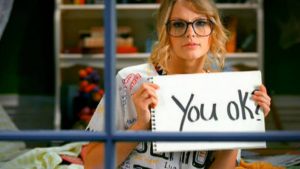
Remember before it was cool to hate Taylor Swift for no reason at all and it was socially acceptable to know all the words to her country-pop crossover hits? Those were the DAYS.
“The Climb” – Miley Cyrus
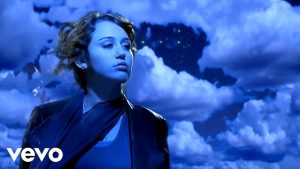
Miley tried SO HARD to show us that she had so much more to offer as an adult singer and actress (even if this was a song from Hannah Montana: The Movie) but everyone still refused to let her age out of her Disney image—y’know, until she started twerking and licking sledgehammers. Only then did we see her as the adult she’d been trying to tell us she was back in 2009.
“Life After You” – Daughtry
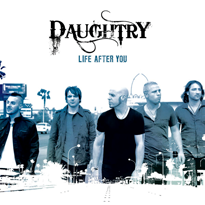
Raise your hand if you miss 2000s alternative pop rock a.k.a. Daughtry’s first two albums!
“You Found Me” – The Fray
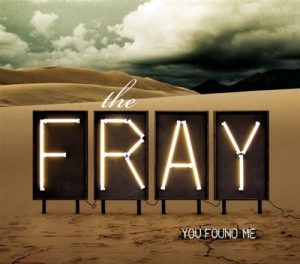
I also miss the era when everyone became obsessed with whatever depressing-yet-beautiful alternative rock song they played on Grey’s Anatomy that week (in case you needed an excuse start crying, this song was used when George O’Malley died).
“Empire State of Mind” – Jay-Z feat. Alicia Keys
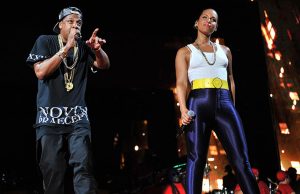
Remember when you used to listen to Jay-Z and Alicia Keys sing about that concrete jungle where dreams are made of while absentmindedly staring out a car window, pretending that you’d actually been to that place before and experienced the magical things they were talking about? No? Just me? OK.




